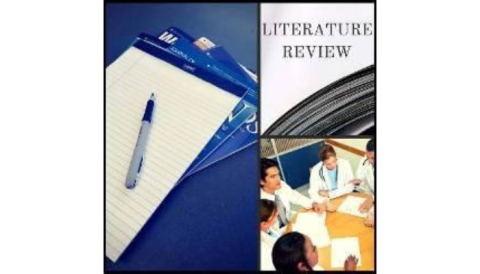Review: Opioid Treatment and Chronic Wound Healing
January 5, 2017
Temple University School of Podiatric Medicine Journal Review Club
Editor's note: This post is part of the Temple University School of Podiatric Medicine (TUSPM) journal review club blog series. In each blog post, a TUSPM student will review a journal article relevant to wound management and related topics and provide their evaluation of the clinical research therein.
Article title: Relationship between Opioid Treatment and Rate of Healing in Chronic Wounds.
Authors: Victoria K. Shanmugam, MD; Kara S. Couch, MS, CRNP, CWS; Sean McNish, MS, CRA; Richard L. Amdur, PhD
Journal name and issue: Wound Repair and Regeneration, November 16, 2016 (Epub ahead of print).
Reviewed by: John Martucci, Class of 2018, Temple University School of Podiatric Medicine
While opioids are routinely prescribed for painful and chronic wounds, the effects of the medications are not well described in literature. Past studies suggest that stimulation of mu-opiate receptors on keratinocytes may induce transforming growth factor-beta (TGF-beta) and cytokeratin 16 (CK16), which are molecules that appear in wound healing environments. However, other studies suggest opioids may impede immune activation and negatively affect healing. This longitudinal observational study sought to elucidate the effect of opioids on healing of wounds in the Wound Healing and Etiology (WE-HEAL) Study, a repository of 450 patients. Parameters such as pain score, longitudinal opioid exposure, and total wound surface area (tWSA) were investigated.
Methods
Patients in the WE-HEAL study were followed at tertiary referral centers that focus on the management of patients with chronic wounds. To be included in the study, one had to have an open wound at the initial visit and more than one follow-up visit. Data investigated included tWSA (sum of total wounds), pain score (0-10; 0 being "no pain," 10 "worst pain ever"), and opiate exposure (calculated as a patient's daily morphine-equivalent exposure). Because the three variables were expected to be positively correlated, the investigators sought to further tease out the effects of opioid treatment on healing with statistical methods such as univariate association, static multivariate logistic regression models, time-to-event analyses, and dynamic fixed-effects mixed model regression.
Results
Of the 450 patients, 445 were included in the study and 329 (73.9%) received opioids during the course of care. The combined percentage of patients that healed at one point during the study ("once-healed") or were healed at their final measurement ("final-healed") was 74.2%. Using univariate analysis, there was no significant difference between healing in those taking and not taking opioids. While mean opioid dose was not significantly associated with healing status (once-healed, final-healed, and never-healed), patients who were never exposed to opioids healed faster than those taking less than 10 mg per day or greater than 10 mg per day (after adjusting for baseline wound size and pain level). Furthermore, those exposed to an opioid dose between zero and 10 mg per day were not at a greater hazard of not healing than those not taking opioids. Opioid dose was also significantly associated with wound size after controlling for effects of pain score.
Conclusion
The authors concluded that opioid usage is associated with delayed wound healing. While opioids are found to be enhancers of collagen deposition and tensile strength of acute wounds in animal studies, the authors suggest that the biological milieu of the chronic wound may thwart the beneficial effects of opioids. This study may suggest that opioid use in chronic wound care may negatively impact healing. While this study attempts to examine the role opioids play at a more clinical level of chronic wound healing, investigations into the role of opioids at the cellular and molecular level are necessary. Limitations of the study include not controlling for co-morbidities, unknown levels of opiate receptor expression in individual wounds, variance of wound etiologies across patients, and uncertainty when it comes to the reliability of patient medical records regarding opioid exposure.
About the Authors:
John Martucci is a third-year student at Temple University School of Podiatric Medicine (TUSPM). He graduated from Boston College in 2012 with a Bachelor of Science in Biology and Economics. John's interests include primary podiatric medicine and surgery, dermatology, wound care, and lower extremity biomechanics.
Dr. James McGuire is the director of the Leonard S. Abrams Center for Advanced Wound Healing and an associate professor of the Department of Podiatric Medicine and Orthopedics at the Temple University School of Podiatric Medicine in Philadelphia.
The views and opinions expressed in this blog are solely those of the author, and do not represent the views of WoundSource, HMP Global, its affiliates, or subsidiary companies.










Follow WoundSource
Tweets by WoundSource